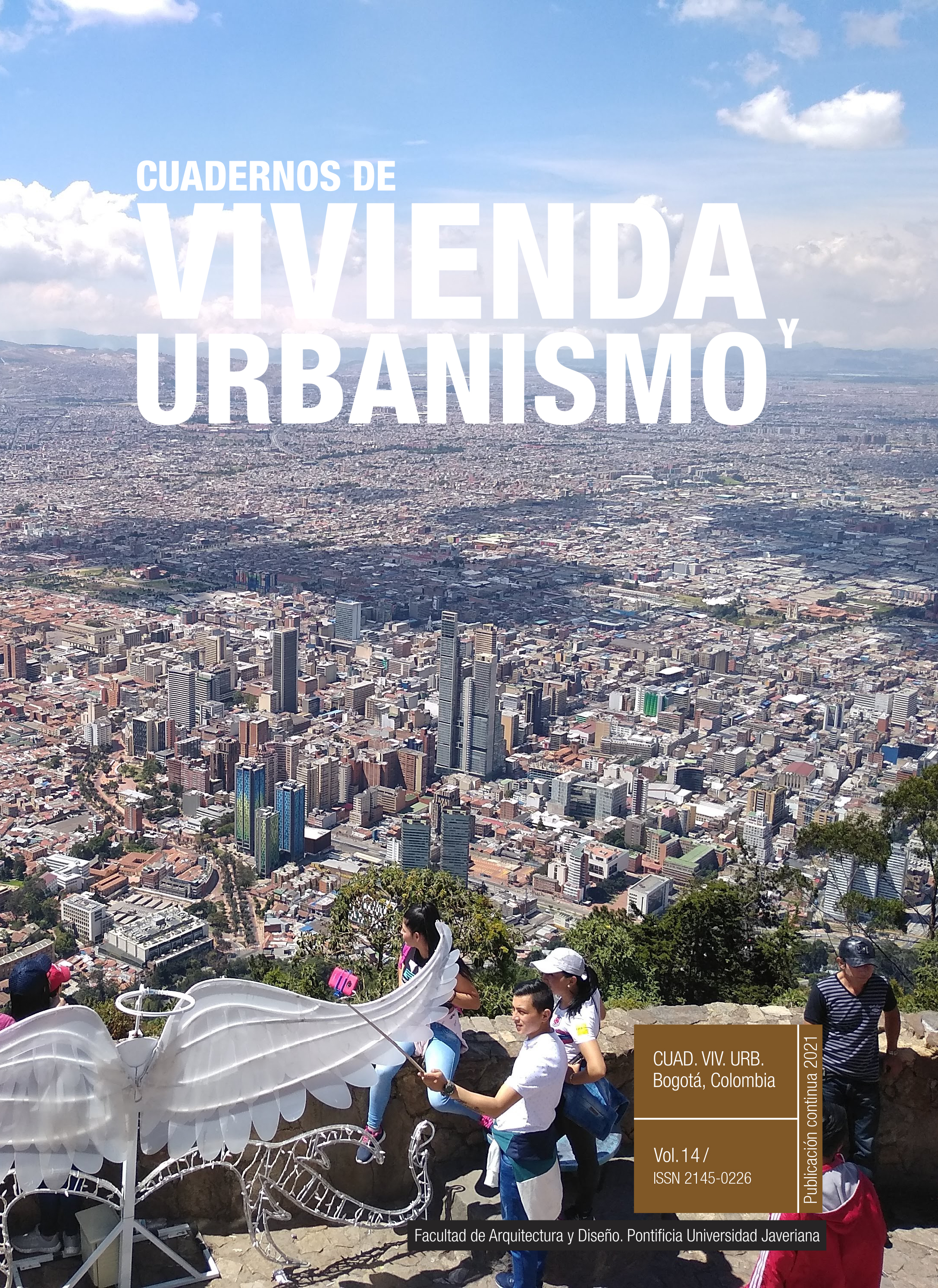Abstract
The research raises the fundamental need to cross the scales of approximation to the physical environment, not in a linear and schematic way, but by making leaps that occur with the social practices of everyday life that modify the limits of urban hierarchization. The method understands that the physical reality is continuous, but that the graphic approach cannot be. In regard to this point, a multi-scale analysis is proposed, defining a series of frames that meet the need for continuity in the analysis of the housing project. A multitemporal analysis is also carried out, where the transformations suffered by the housing complexes over time are identified. The comparative analysis is partially approached from different scales that are later unified in a comprehensive morpho-topological characterization of the case studies in their current state with the final objective of proposing possible regeneration strategies. The projects compared, Mucho Lote I of the Municipality of Guayaquil (2001-2005) and Socio Vivienda I of the Ministry of Urban Development and Housing of Ecuador (2008-2012), are two sets of Social Interest Housing built in Guayaquil, Ecuador, by the local government and the State, respectively, pioneers of the new housing policies that consolidate a model of dispersed and segregated urban development and individualized housing types
Bamba, J. C. (2017). Caracterización tipológica de la vivienda colectiva pública en Guayaquil (1970-1990). Revista AUC, 39(2), 19-29. https://editorial.ucsg.edu.ec/ojs-auc/index.php/auc-ucsg/article/view/15
Bamba, J. C. (2018). Vivienda colectiva pública: Guayaquil (1970-1990). Universidad Católica de Santiago de Guayaquil.
Castañeda, J. M. (2011). Los cerramientos ilegales en Bogotá. Territorios, 2(25), 213-244. https://www.redalyc.org/pdf/357/35720830010.pdf
Borja, J., y Muxí, Z. (2000). El espacio público: ciudad y ciudadanía. Electa.
De Certeau, M. (1999). La invención de lo cotidiano. I. Artes de hacer. Universidad Iberoamericana.
Druot, F., Lacaton, A., y Vassal, J-Ph. (2007). Plus: La vivienda colectiva. Territorio de excepción. Gustavo Gili.
García-Huidobro, F., Torres Torriti, D., y Tugas, N. (2008). ¡El tiempo construye! El Proyecto Experimental de Vivienda (PREVI) de Lima: génesis y desenlace. Gustavo Gili.
Gelabert Abreu, D., y González Couret, D. (2013). Vivienda progresiva y flexible. Aprendiendo del repertorio. Arquitectura y Urbanismo, 34(2), 48-63. http://scielo.sld.cu/scielo.php?script=sci_arttext&pid=S1815-58982013000200005
Hermida, M., Hermida, C., Cabrera, N., y Calle, C. (2015). La densidad urbana como variable de análisis de la ciudad: El caso de Cuenca, Ecuador. EURE (Santiago), 41(124), 25-44. http://doi.org/10.4067/S0250-71612015000400002
Komossa, S. (2010). The Dutch urban block and the public realm: Models, rules, ideals. Vantilt Publishers.
Lefebvre, H. (2013). La producción del espacio. Capitán Swing.
Martín Blas, S., Pajares, I., García, M., y Rodríguez, I. (2012). I+D+VS: futuros de la vivienda social en 7 ciudades. Fundación Arquitectura COAM y Ministerio de Fomento.
Montaner, J. M., y Muxí Martínez, Z. (2010). Reflexiones para proyectar viviendas del siglo XXI. Dearq. Revista de Arquitectura, 6, 82-99. https://revistas.uniandes.edu.co/doi/pdf/10.18389/dearq6.2010.09
Panerai, P., y Mangin, D. (2002). Proyectar la ciudad. Celeste Ediciones.
Rossi, A. (2004). La arquitectura de la ciudad. Gustavo Gili.
Sabatini, F., Cáceres, G., y Cerda, J. (2001). Segregación residencial en las principales ciudades chilenas: Tendencias de las tres últimas décadas y posibles cursos de acción. Eure (Santiago), 27(82), 21-42. http://doi.org/10.4067/S0250-71612001008200002
Sánchez, P. (2015). Mercado de suelo informal y políticas de hábitat urbano en la ciudad de Guayaquil. Flacso Ecuador.
Siclari Bravo, P. (2009). Instrumentos de integración social en la nueva Política Habitacional y Urbana de Chile. Centro-h, 3, 63-75.
Solá-Morales, M. (1992, 12 de mayo). Espacios públicos espacios colectivos. La Vanguardia.
Solá-Morales, M. (2008). Ciudades cortadas. En M. Solá-Morales (Ed.), De cosas urbanas (pp. 174-183). Gustavo Gili.
Secchi, B. (2015). La ciudad de los ricos y la ciudad de los pobres. Catarata.
Vicuña del Río, M. M. (2015). Las formas de la densidad residencial. El caso del Gran Santiago, Chile [Tesis doctoral]. Pontificia Universidad Católica de Chile, Santiago de Chile. https://repositorio.uc.cl/handle/11534/16737

This work is licensed under a Creative Commons Attribution 4.0 International License.


